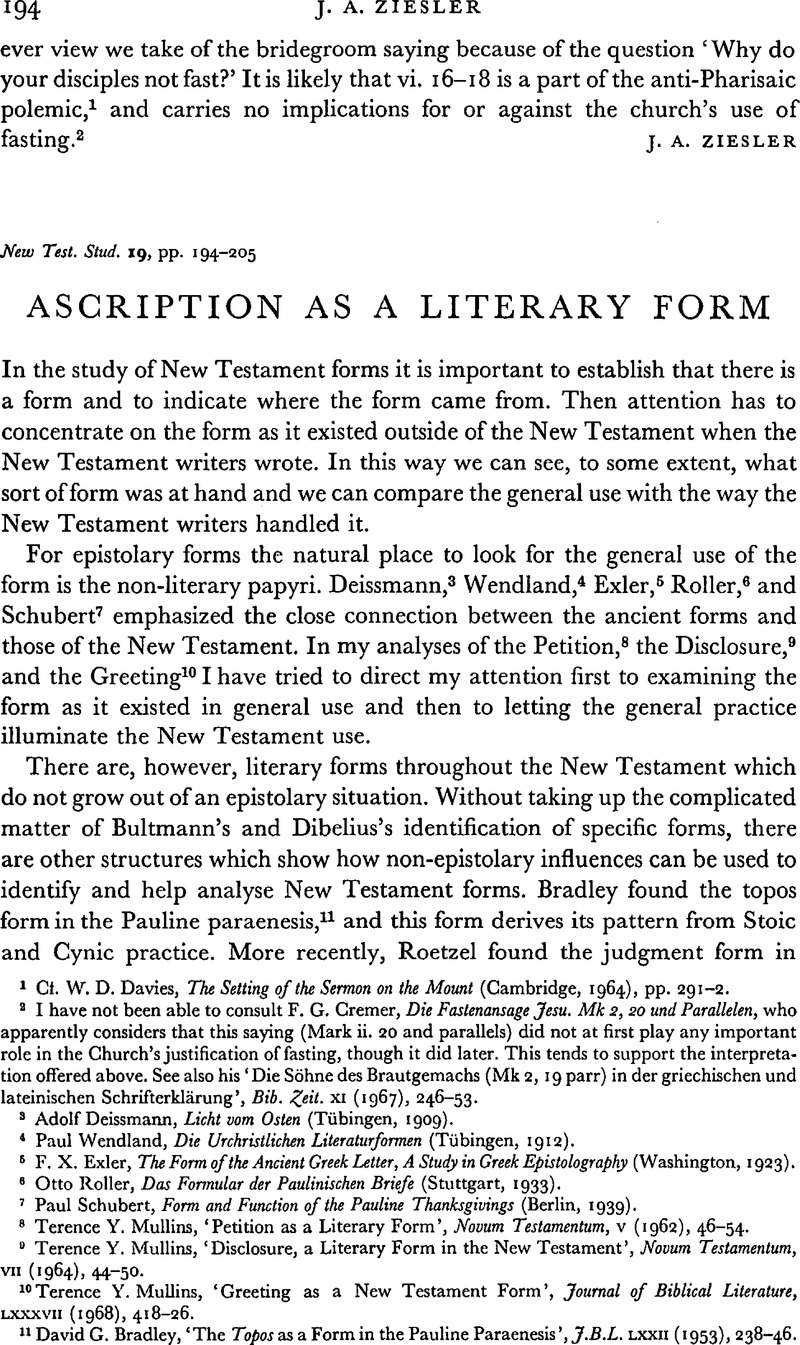Article contents
Ascription as a Literary Form
Published online by Cambridge University Press: 05 February 2009
Abstract

- Type
- Short Studies
- Information
- Copyright
- Copyright © Cambridge University Press 1973
References
page 194 note 3 Adolf, Deissmann, Licht vom Osten (Tübingen, 1909).Google Scholar
page 194 note 4 Paul, Wendland, Die Urchristlichen Literaturformen (Tübingen, 1912).Google Scholar
page 194 note 5 Exler, F. X., The Form of the Ancient Greek Letter, A Study in Greek Epistolography (Washington, 1923).Google Scholar
page 194 note 6 Otto, Roller, Das Formular der Paulinischen Briefe (Stuttgart, 1933).Google Scholar
page 194 note 7 Paul, Schubert, Form and Function of the Pauline Thanksgivings (Berlin, 1939).Google Scholar
page 194 note 8 Mullins, Terence Y., ‘Petition as a Literary Form,’ Novum Testamentum, v (1962), 46–54.CrossRefGoogle Scholar
page 194 note 9 Mullins, Terence Y., ‘Disclosure, a Literary Form in the New Testament,’ Novum Testamentum, VII (1964), 44–50.Google Scholar
page 194 note 10 Mullins, Terence Y., ‘Greeting as a New Testament Form,’ Journal of Biblical Literature, LXXXVII (1968), 418–26.CrossRefGoogle Scholar
page 194 note 11 Bradley, David G., ‘The Topos as a Form in the Pauline Paraenesis,’ J.B.L. LXXII (1953), 238–46.Google Scholar
page 195 note 1 Calvin, Roetzel, ‘The Judgment Form in Paul's Letters,’ J.B.L. LXXXVIII (1969), 305–12.Google Scholar
- 2
- Cited by


